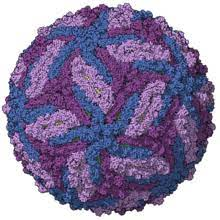
New Delhi, Feb 05 : While India is grappling with a growing cancer incidence rate, we have also been at the forefront of several innovations in cancer care and treatment. The critical solution to overcoming the challenges posed by this disease, however, lies in keeping our communities informed about its symptoms.
Currently, 1.4 million (14 lakh) new cancer cases are detected each year and projections are that it will increase to 2 million (20 lakh) by 2040. It is also important to note that in contrast to the global landscape, where 70% of cancers are detected early, India presents a unique scenario, with 70% of cases diagnosed at an advanced stage. Particularly concerning is the situation of breast cancer. Even though it is easily screenable, nearly 60% of cases in India are diagnosed at stage III or IV. Societal taboos often stifle open conversations about women’s health, contributing to delayed diagnosis.
To this end, a pivotal step in detecting breast cancer early lies in empowering women with information to recognize and address any irregularities in their breasts through regular self-examinations. Lumps can be the initial sign of breast cancer and can be easily detected through a self-breast exam.
While not all lumps are cancerous, it is essential to rule out the possibility through clinical screening.
Dr. Rajanigandha Tudu, Medical Oncologist, Ranchi Cancer Hospital and Research Centre, supported by Tata Trusts explains three fundamental aspects of breast self-examination:
Consistency Check: Feel for the general size and shape consistency of both breastsSkin Examination: Look for puckering or dimpling on the skinNipple Inspection: Inspect for any discharge from the nipples
Here’s how you can self-examine your breasts:
Step 1: Use the pads of your fingers (not the tips) and apply varying pressure – light, medium, firm – to feel the breast tissues.Step 2: Place your right hand on the back of your head and use the three middle fingers of your left hand to gently press down on the right breast.Step 3: Start navigating at the outer edges of your breast and move in a circular motion toward the nipple. Cover the entire breast in this motion and then move from the collarbone to the top of the abdomenStep 4: Feel the breast tissue for any abnormalities – lumps, thickening, or changes in texture Step 5: Gently squeeze the nipple to check for discharge and also check for changes in the appearance or direction of the nipples Step 6: Repeat the process for the left breast
Undertaking a breast self-examination is more than just a routine; it is a promise to prioritize your well-being as well as an essential step in understanding the symptoms of a disease that can be fatal, if not detected early. Promptly responding to any changes, lumps, or irregularities that you come across during self-examination is crucial. It’s a monthly proactive step that should be followed by a clinical breast examination every three years, thereby ensuring early and timely detection.
Remember, every conversation and every self-examination has the potential to be life-saving.






